Slobot About Town XC:
 |
 |
Slobot celebrates Veterans Day!
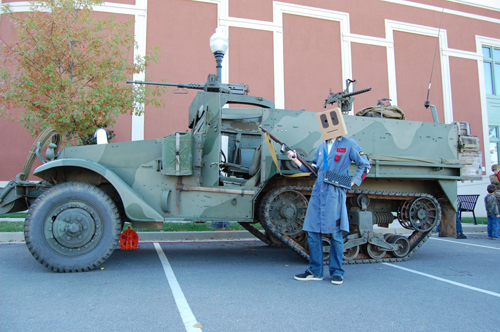
It was early November, and Slobot was hanging out with a Thompson submachine gun and a WWII half-track. |
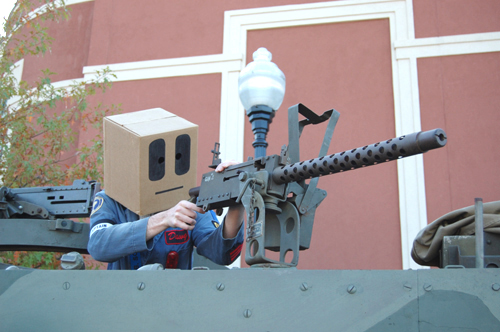
The Thompson and half-track were part of the Chapman Cultural Center's celebration of Veterans Day. |
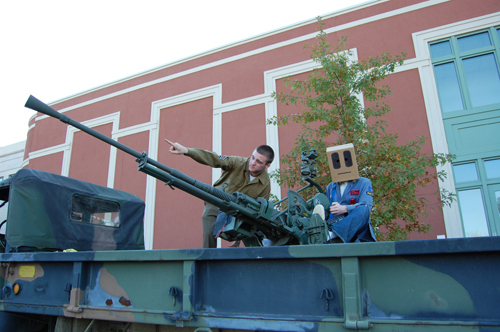
Slobot loved the big guns and vehicles of America's military past. They made Slobot ponder upon the heroes of Spartanburg. |
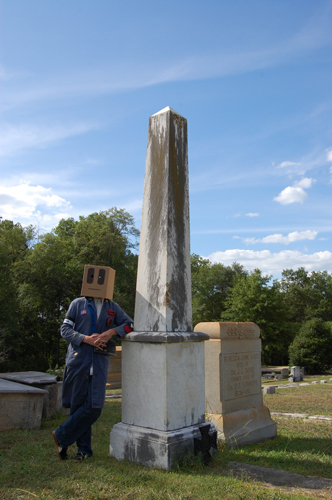
Heroes like Spartanburg's highest-ranking Confederate officer, Col. Oliver E. Edwards. Col. Oliver E. Edwards served in the 13th Regiment of the South Carolina Volunteers. |
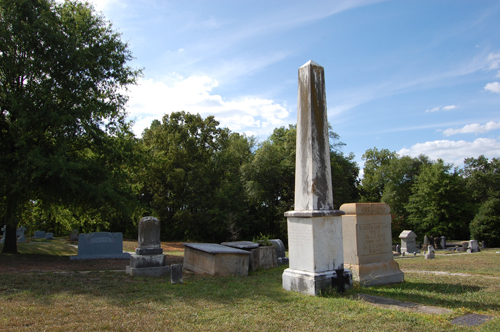
Edwards was leading McGowan's Brigade into battle at Chancellorsville, Virginia on May 03, 1863 when he would be mortally wounded. He would die from his wounds in Goldsboro, North Carolina on June 21, 1863. |
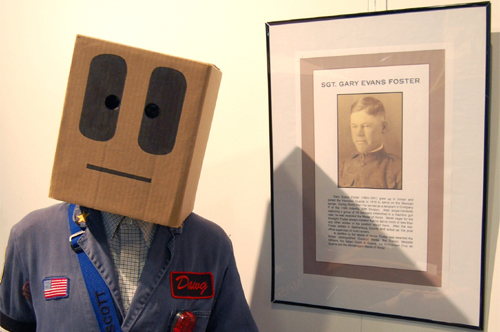
Slobot then thought of another Spartanburg hero, Gary Evans Foster. Foster was born in Spartanburg on November 06, 1894. Foster would grow up in Inman and, in 1916, join the Hampton Guards to serve on the Mexican border. During World War I Foster would serve as a sergeant in Company P of the 118th Infantry, 30th Division. |

During World War I Foster would distinguish himself and become one of the 96 World War I Medal of Honor recipients. To qualify for the Medal of Honor, there must be at least two eyewitnesses of a deed deemed so outstanding as to clearly distinguish gallantry above and beyond the call of duty. Nominations make their way through military channels until they reach the Pentagon and, eventually, the President of the United States of America, who formally approves the award.. Foster's official Medal of Honor citation reads, "When his company was held up by violent machine-gun fire from a sunken road, St. Foster with an officer went forward to attack the hostile machine-gun nests. The office was wounded, but Sgt. Foster continued on alone in the face of the heavy fire and by effective use of hand grenades and his pistol killed several of the enemy and captured 18." |
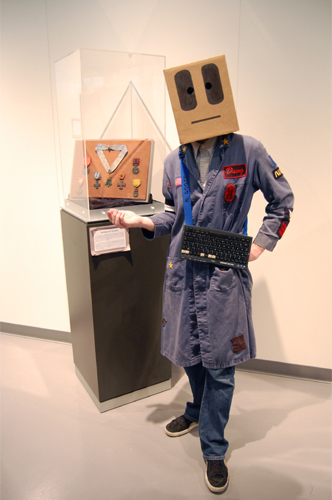
Foster, forever modest, would claim that he did no more or less than any other soldier in his position would have. In addition to the Medal of Honor, Foster would be awarded the English Distinguished Conduct Medal, Italian and Portuguese War Crosses, the French Medaille Militaire and the Montenegrin Medal of Honor. After the war, Foster would settle in Spartanburg County and become the post office supervisor of rural carriers. He would die on July 22, 1951 and now rests in eternal peace in the cemetery of New Prospect Baptist Church. |
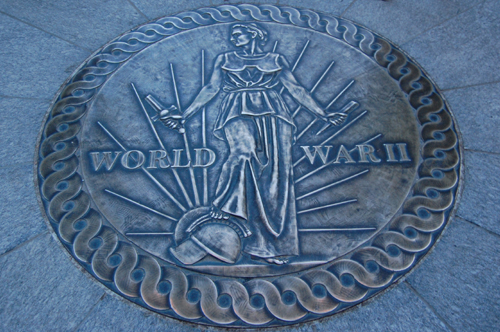
While Spartanburg's first Medal of Honor would be won in World War I, Spartanburg's second and third would be earned in World War II. |
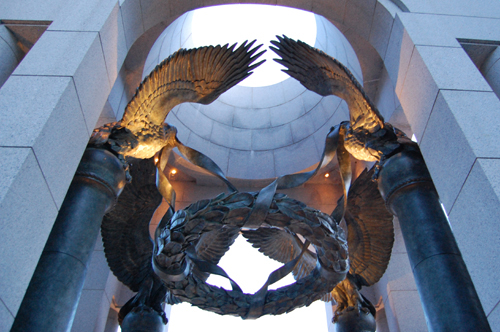
Sergeant Robert Allen Owens would be awarded the Medal of Honor for his service in World War II. Owens' Medal, unfortunately, would be awarded posthumously. Owens was born in Greenville, SC on September 13, 1920. His family would move to Spartanburg, where he resided prior to his entry into the war. Owens would die a hero during the Bougainville Campaign in the South Pacific on November 01, 1943. |
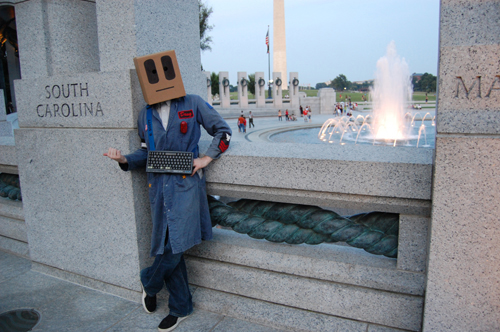
His official Medal of Honor citation reads, "For conspicuous gallantry and intrepidity at the risk of his life above and beyond the call of duty while serving with a marine division, in action against enemy Japanese forces during extremely hazardous landing operations at Cape Torokina, Bougainville, Solomon Islands, on 1 November 1943. Forced to pass within disastrous range of a strongly protected, well-camouflaged Japanese 75-mm. regimental gun strategically located on the beach, our landing units were suffering heavy losses in casualties and boats while attempting to approach the beach, and the success of the operations was seriously threatened. Observing the ineffectiveness of marine rifle and grenade attacks against the incessant, devastating fire of the enemy weapon and aware of the urgent need for prompt action, Sgt. Owens unhesitatingly determined to charge the gun bunker from the front and, calling on 4 of his comrades to assist him, carefully placed them to cover the fire of the 2 adjacent hostile bunkers. Choosing a moment that provided a fair opportunity for passing these bunkers, he immediately charged into the mouth of the steadily firing cannon and entered the emplacement through the fire port, driving the guncrew out of the rear door and insuring their destruction before he himself was wounded. Indomitable and aggressive in the face of almost certain death, Sgt. Owens silenced a powerful gun which was of inestimable value to the Japanese defense and, by his brilliant initiative and heroic spirit of self-sacrifice, contributed immeasurably to the success of the vital landing operations. His valiant conduct throughout reflects the highest credit upon himself and the U.S. Naval Service." |
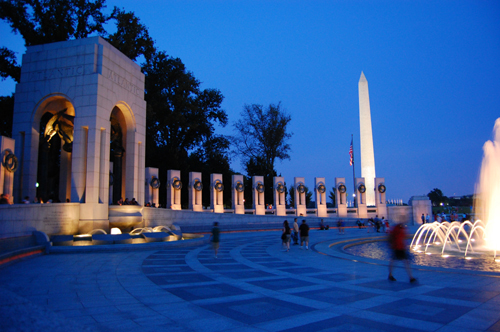
Thomas E. Atkins would be born in Campobello on February 05, 1921. On March 10, 1945 Thomas E., Gene to his friends, Atkins would distinguish himself in battle in the Philippines. His official citation reads, "He fought gallantly on the Villa Verde Trail, Luzon, Philippine Islands. With 2 companions he occupied a position on a ridge outside the perimeter defense established by the 1st Platoon on a high hill. At about 3 a.m., 2 companies of Japanese attacked with rifle and machinegun fire, grenades, TNT charges, and land mines, severely wounding Pfc. Atkins and killing his 2 companions. Despite the intense hostile fire and pain from his deep wound, he held his ground and returned heavy fire. After the attack was repulsed, he remained in his precarious position to repel any subsequent assaults instead of returning to the American lines for medical treatment. An enemy machinegun, set up within 20 yards of his foxhole, vainly attempted to drive him off or silence his gun. The Japanese repeatedly made fierce attacks, but for 4 hours, Pfc. Atkins determinedly remained in his fox hole, bearing the brunt of each assault and maintaining steady and accurate fire until each charge was repulsed. At 7 a.m., 13 enemy dead lay in front of his position; he had fired 400 rounds, all he and his 2 dead companions possessed, and had used 3 rifles until each had jammed too badly for further operation. He withdrew during a lull to secure a rifle and more ammunition, and was persuaded to remain for medical treatment. While waiting, he saw a Japanese within the perimeter and, seizing a nearby rifle, killed him. A few minutes later, while lying on a litter, he discovered an enemy group moving up behind the platoon's lines. Despite his severe wound, he sat up, delivered heavy rifle fire against the group and forced them to withdraw. Pfc. Atkins' superb bravery and his fearless determination to hold his post against the main force of repeated enemy attacks, even though painfully wounded, were major factors in enabling his comrades to maintain their lines against a numerically superior enemy force." |
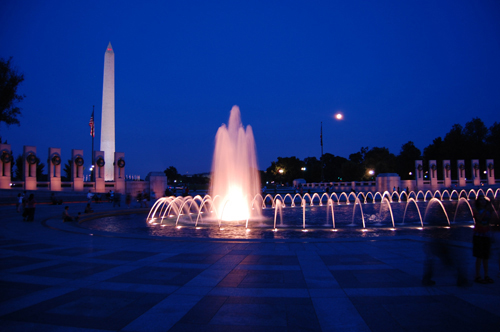
Atkins returned to Campobello where, on September 15, 1999, he would die. Atkins rests in eternal peace in Inman's Fellowship Baptist Church Cemetery. |
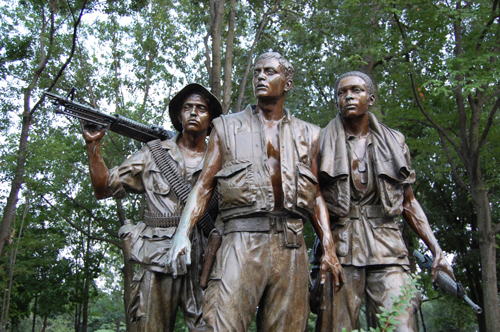
Spartanburg's fourth and final Medal of Honor would be awarded to Michael Edwin Thornton. Thornton was born March 23, 1949 in Greenville, South Carolina. He would be raised in Spartanburg and would graduate Spartanburg High School in 1967. During the Vietnam War Thornton would enlist in the Navy and eventually become a Navy SEAL. As a SEAL Thornton would distinguish himself on Halloween 1972. His official Medal of Honor Citation reads, "For conspicuous gallantry and intrepidity at the risk of his life above and beyond the call of duty while participating in a daring operation against enemy forces in the Republic of Vietnam on October 31 1972. Petty Officer Thornton, an assistant United States Navy advisor, along with a United States Navy lieutenant serving as senior advisor, accompanied a three-man Vietnamese patrol on an intelligence gathering and prisoner capture operation against an enemy-occupied naval river base. Launched from a Vietnamese Navy junk in a rubber boat, the patrol reached land and was continuing on foot toward its objective when it suddenly came under heavy fire from a numerically superior force. The patrol called in naval gunfire support and then engaged the enemy in a fierce firefight, accounting for many enemy casualties before moving back to the waterline to prevent encirclement. Upon learning that the senior advisor had been hit by enemy fire and was believed to be dead, Petty Officer Thornton returned through a hail of fire to the lieutenant's last position, quickly disposed of two enemy soldiers about to overrun the position, and succeeded in removing the seriously wounded and unconscious senior naval advisor to the water's edge. He then inflated the lieutenant's life jacket and towed him seaward for approximately two hours until picked up by support craft. By his extraordinary courage and perseverance, Petty Officer Thornton was directly responsible for saving the life of his superior officer and enabling the safe extraction of all patrol members, thereby upholding the highest traditions of the United States Naval Service." |
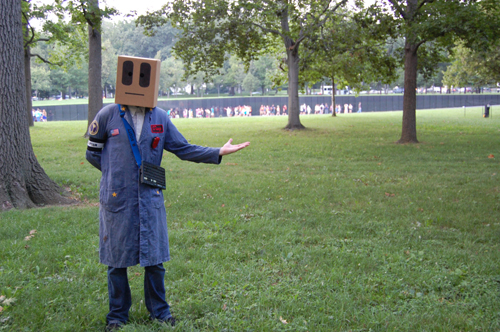
Other heroes of the Vietnam War can be found at the Vietnam Veterans Memorial Wall on the National Mall in Washington, DC. |
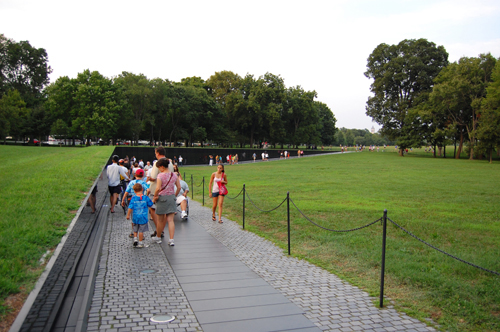
58,195 names are etched into the Wall.
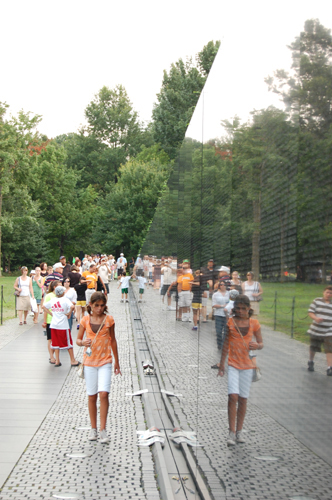
They are the 58,195 US soldiers and sailors killed in action during the Vietnam War. |
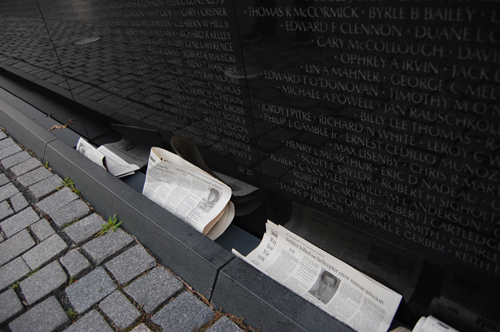
At least 69 of those names belong to Spartanburg veterans.
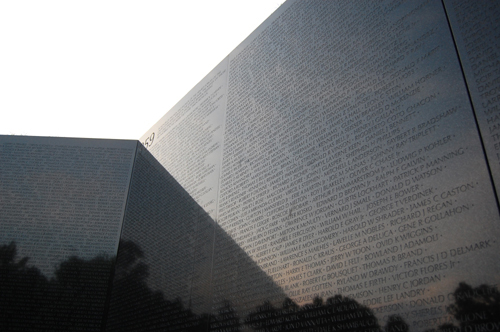
One of those 69 Spartanburg veterans is Thomas Rice, Jr.
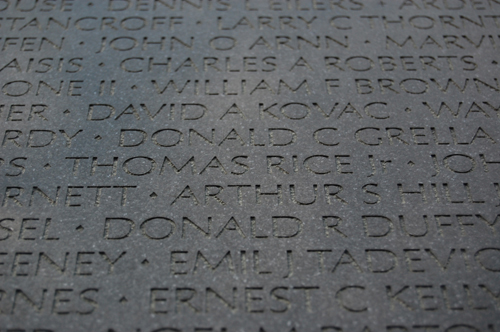
Thomas Rice, Jr. was born October 07, 1942 in Spartanburg, SC. After graduating from Carver High School, he enlisted in the Army. |
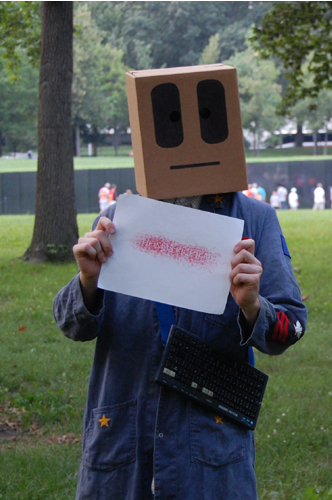
Six years later, on December 28, 1965, Rice would be serving as a door gunner on a Bell UH1 Iroquois "Huey" helicopter. Also aboard were Kenneth L. Stancil, pilot; Jesse D. Phelps, co-pilot; and Donald C. Grella, crew chief. |

The crew was on a mission over the South Vietnamese jungle when something happened. Search and rescue missions never uncovered the missing crew or 'copter. Rice would become the last of Spartanburg's unaccounted for Vietnam veterans. |

It seemed as if Rice's family, which includes a daughter, would never have closure in regards to whatever became of Thomas. Then, in April of 2006, two Vietnamese villagers would claim that they had shot down a helicopter, a helicopter that could have been Rice's Huey. |
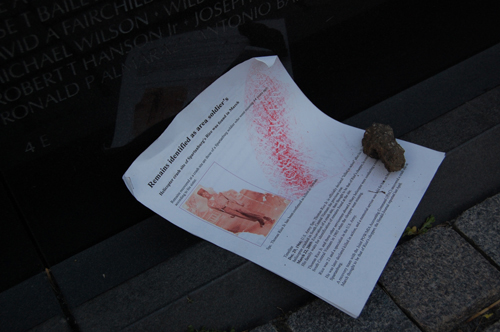
A villager led a team with the Joint POW/MIA Accounting Command to a helicopter crash site. |
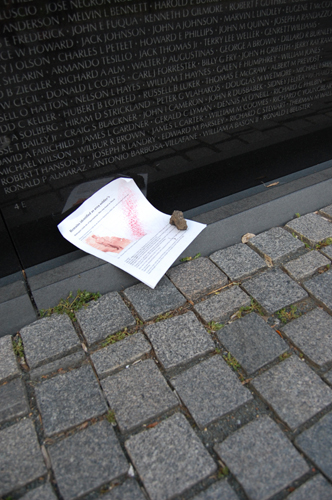
Remains inside were determined to be those of Thomas Rice, Jr.
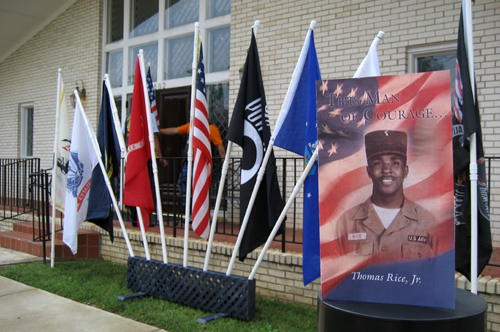
A memorial service would be held for Rice on September 19, 2009 at the John Stinson Woodward Memorial Chapel on Howard Street. |
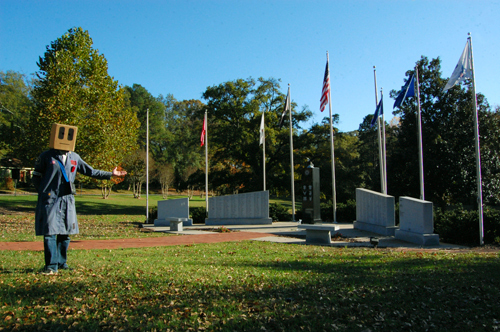
Thomas Rice, Jr. is honored both on the Vietnam Veterans Memorial Wall...

and the War Memorial at Duncan Park. Slobot would like to thank and salute all of Spartanburg County's veterans, past, present and future! |
